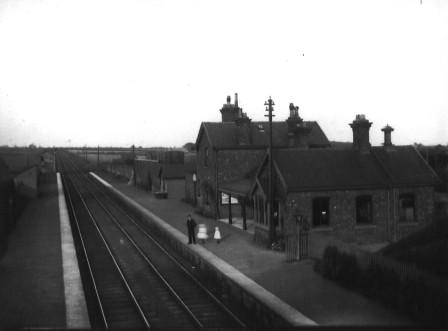
Scholes Station c.1908
| "The opening of the Leeds and Wetherby Railway. This branch was opened yesterday when MR CHAMBERLAIN and several other officials of the company went to Wetherby by train. Four passenger trains will run daily." |
| "Proposed Thomas Crosland, seconded by Jonathan Johnson - the purchase money arising from the sale of the land to the North Eastern Railway Company to be deposited in the Consuls". Proposed by Thos. Robshaw, seconded by Benj. Dickinson, that the Rev. CH Hope and Thos. Crosland be appointed as trustees to invest the above money in the Consuls for the benefit of the ratepayers." |
| "On the New Railway midway between Leeds and Wetherby". |


| Acknowledgements: Department of Community Services, Darlington Railway Centre and Museum D H Reed Peter Styles |
TONY COX |